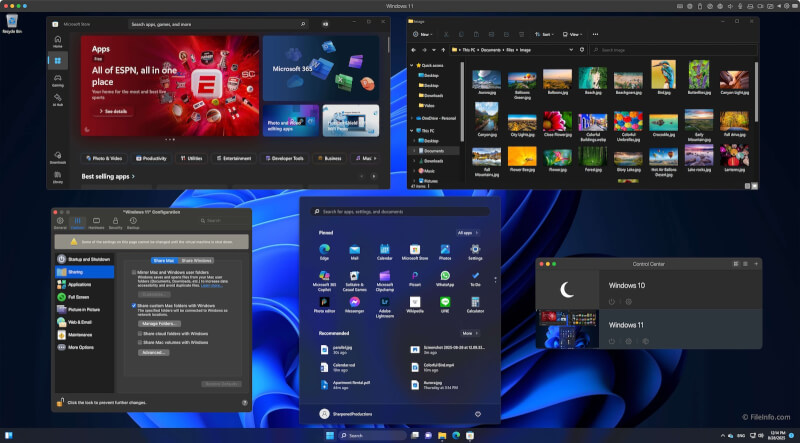Can I run Windows programs (.EXE files) on a Mac?
You can open most Windows documents on a Mac without any trouble, but Windows applications do not run natively on macOS. This is because Windows programs are written for a different operating system and often a different processor architecture. Each operating system—Windows, macOS, or Linux—has its own set of system instructions (APIs), and programs that rely on Windows APIs will not run on a Mac unless additional software translates or emulates those instructions.
Windows applications are also compiled for specific processors, and the machine code produced during compilation must match the hardware it runs on. For many years, Windows PCs and Macs used different processor architectures, meaning software had to be built separately for each platform.
In 2006, Apple switched the Mac lineup from PowerPC to Intel processors, which allowed Macs to run Windows more easily using tools like Boot Camp or virtualization software. Today, however, Apple uses its own Apple Silicon (M1, M2, M3, etc.) chips. These processors offer excellent performance but do not support Boot Camp and cannot run the Intel version of Windows natively. Instead, Apple Silicon Macs rely on modern virtualization or compatibility tools to run Windows apps.
Ways to Run Windows Apps on a Mac
1. Parallels Desktop (Recommended for Apple Silicon)
Parallels Desktop creates a virtual Windows environment inside macOS, letting you install Windows and run most Windows applications as if they were native Mac apps. It supports both Intel and Apple Silicon Macs, and it is the simplest solution for most users.
Features included with version 26:
- Support for Windows 11 (25H2) on both Intel and Apple Silicon Macs
- Quick and easy virtual machine (VM) setup for new users
- Snapshots and VM management for reverting to previous states and controlling storage
- Coherence mode for running Windows apps seamlessly alongside Mac apps
- Optimized performance for Apple Silicon, including M1, M2, and M3 chips
2. VMware Fusion
VMware Fusion also provides virtualization, though support for Apple Silicon is newer and still evolving. It allows you to run Windows ARM versions and many Windows programs inside macOS.
3. CrossOver Mac
CrossOver does not run Windows itself. Instead, it translates many Windows API calls so Windows apps can run directly on macOS. It works well for many popular games and utilities, especially on Apple Silicon, but compatibility varies by application.
4. Apple Boot Camp (Intel Macs Only)
Boot Camp allows Intel-based Macs to install Windows and boot directly into it, providing full native performance. However, Boot Camp is not available on Apple Silicon Macs.
Older PowerPC Macs (Before 2006)
PowerPC-based Macs could not run Windows natively. The only option was to use a PC emulator, software that emulates an entire Windows PC. The most widely used option was Virtual PC, initially developed by Connectix and later purchased by Microsoft.
Emulation enabled PowerPC Macs to run Windows XP and earlier versions, but performance was slow, especially with demanding software such as games or graphics applications. When Apple moved to Intel processors, development of Virtual PC ended.
